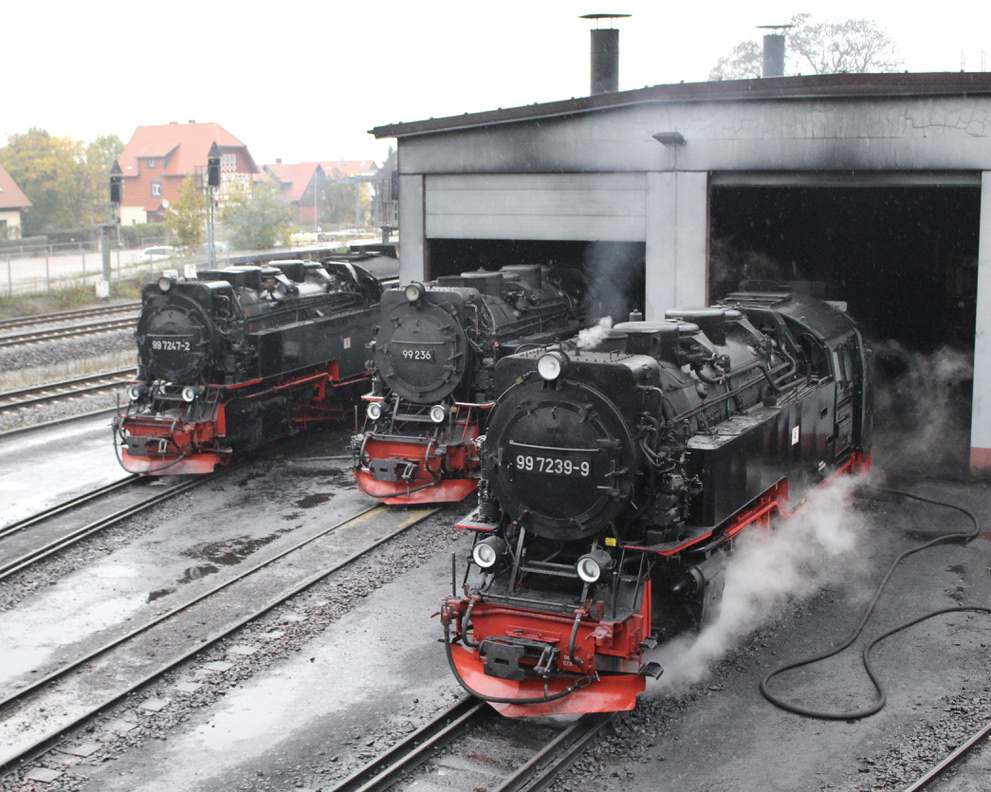
The prospect that German’s Harz Railway might end steam operations prompted me to dig out photos from a 2015 visit to the railroad as part of a Trains Magazine/Special Interest Tours trip, the thought being that readers might like to see a little more from this unique operation. Perhaps a few of you might even be inspired to plan a trip of your own.
The Harz — formally the Harzer Schmalspurbahnen (HSB) — is a meter-gauge railroad in the former East Germany, about 160 miles from Berlin. In case you missed it, it has announced plans for long-term changes including “decarbonization of the popular steam locomotives.” [See “Germany’s premier steam railway to replace steam?” Trains News Wire, Nov. 6, 2024]. No further details were offered, so it’s hard to say if this means an outright replacement of steam, some kind of alternate fueling, or change in some other form. Regardless, any tinkering with the railroad’s fleet of surprisingly brawny 2-10-2T locomotives that ends traditional coal firing will undoubtedly change the dynamic and appeal of the 140-kilometer/87.5-mile mountain operation.
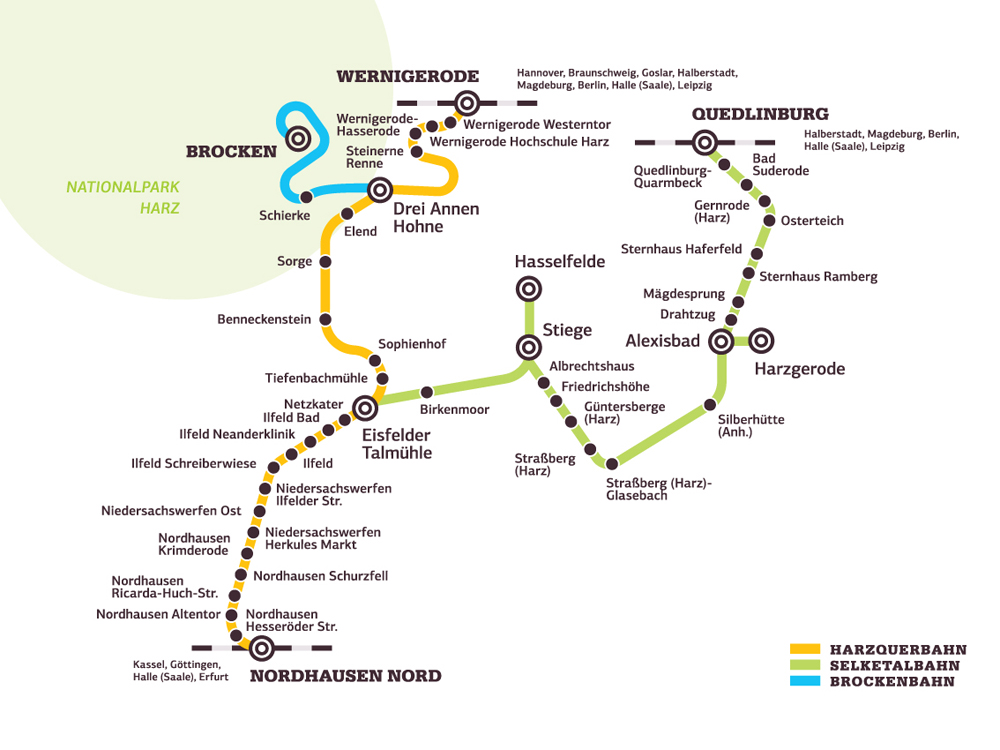
In all, the railroad currently rosters 25 steam locomotives, according to its website (German only, but Google Translate is your friend). These include three 0-4-4-0T Mallets from a group built between 1897 and 1900; another 0-4-4-0T built in 1918; a pair of 0-6-0s dating to 1914; a 2-6-2T from 1939, and 18 of the 2-10-2Ts, 17 of them from a single group built in the 1950s. Not all of these are currently operable, and some only operate on special occasions. But the 2-10-2Ts are the workhorses of the steam fleet, and steam does continue to operate regularly; schedules for the upcoming holiday period between Nov. 29 and Dec. 19 list seven steam round trips daily between Wernigerode and Brocken and four round trips between Harzgerode and Quedlinburg.
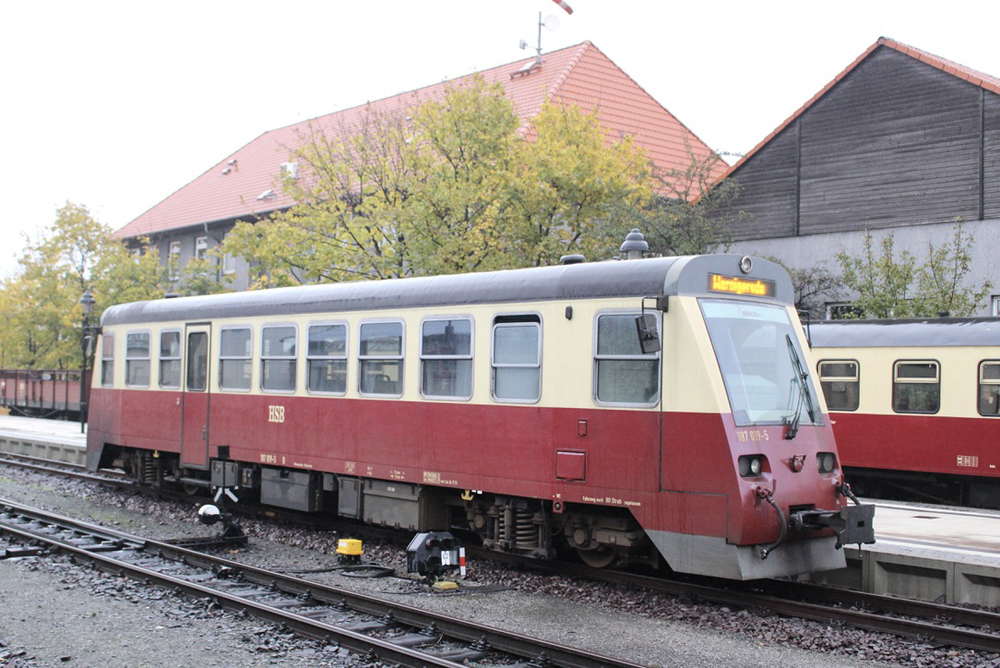
It’s important to note this is not a tourist railroad, although it certainly attracts tourists and caters to them. In part state-funded, it provides basic transportation services across its network, with a fleet of rail buses and some diesel-powered passenger trains in addition to the steam operations. (Oddly, while the steam locomotives have enough heft that it’s easy to forget they are meter-gauge, the rail buses seemed almost toyishly petite, perhaps because they seem extremely narrow, even for narrow gauge.) Also notable: this is not a railway frozen in time operationally; it has CTC, automatic switches, and a host of other modern features.
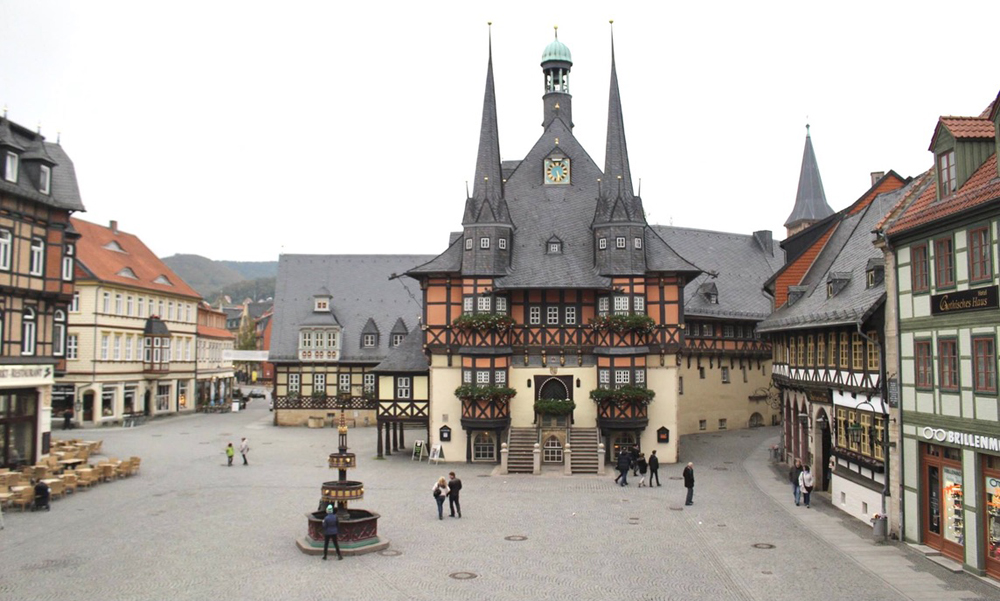
Our group visited in October 2015. Our base for two days of riding was the railway’s headquarters city, Wernigerode, which — as you can see from the photo above of the central square, taken from my hotel room — has a certain storybook quality. (A friend of mine saw this photo and said he expected to see Professor Fate and the Great Leslie enter the frame; bonus points to anyone who appreciates that reference.) The weather was cold, gray, and damp the entire time, which — while not ideal — did make for ample steam and great photos. In addition to our rides, I was up early two mornings to take long walks for photos of some of the early departures, so I ended up with a decent variety of images. Here are just a few.
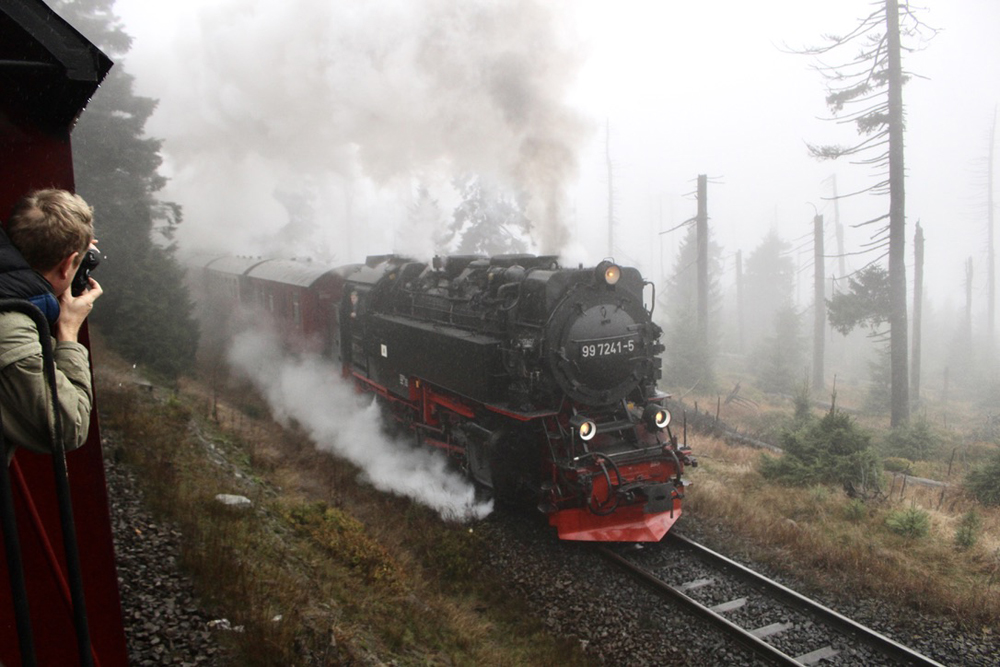
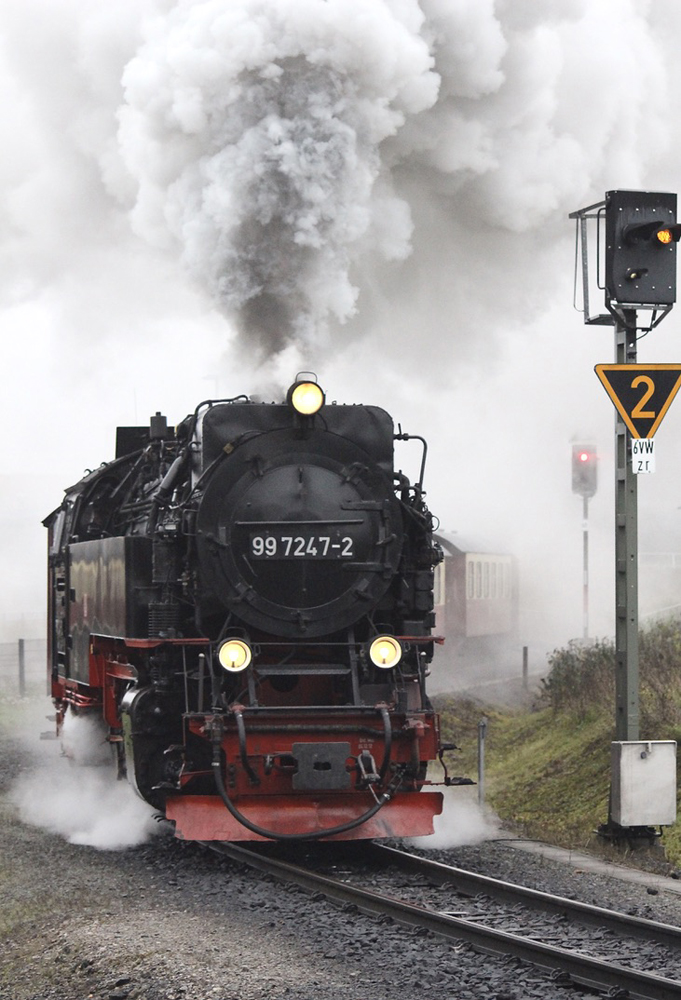
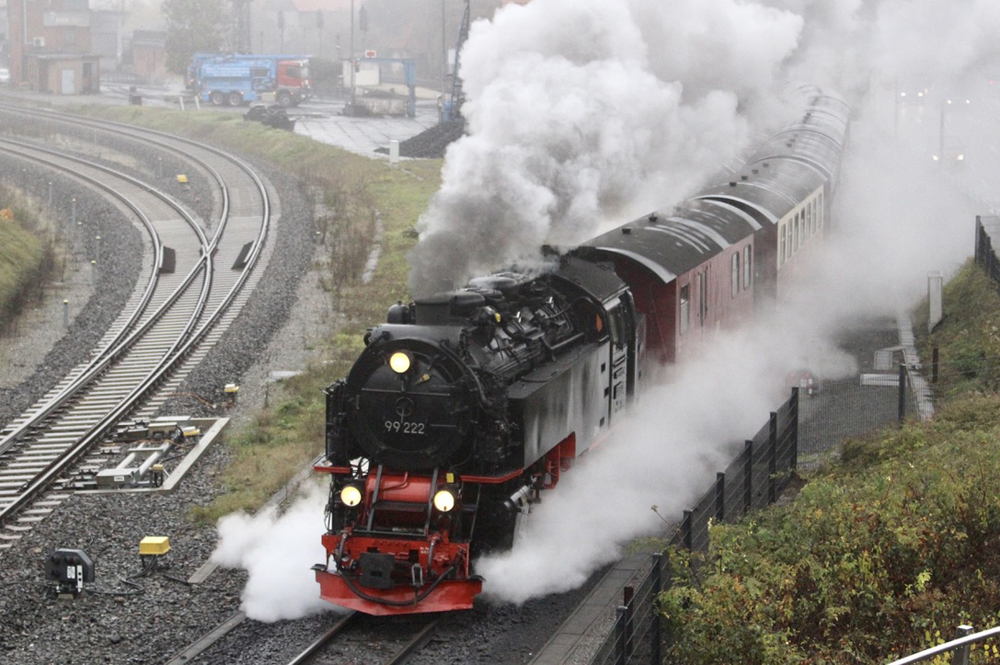
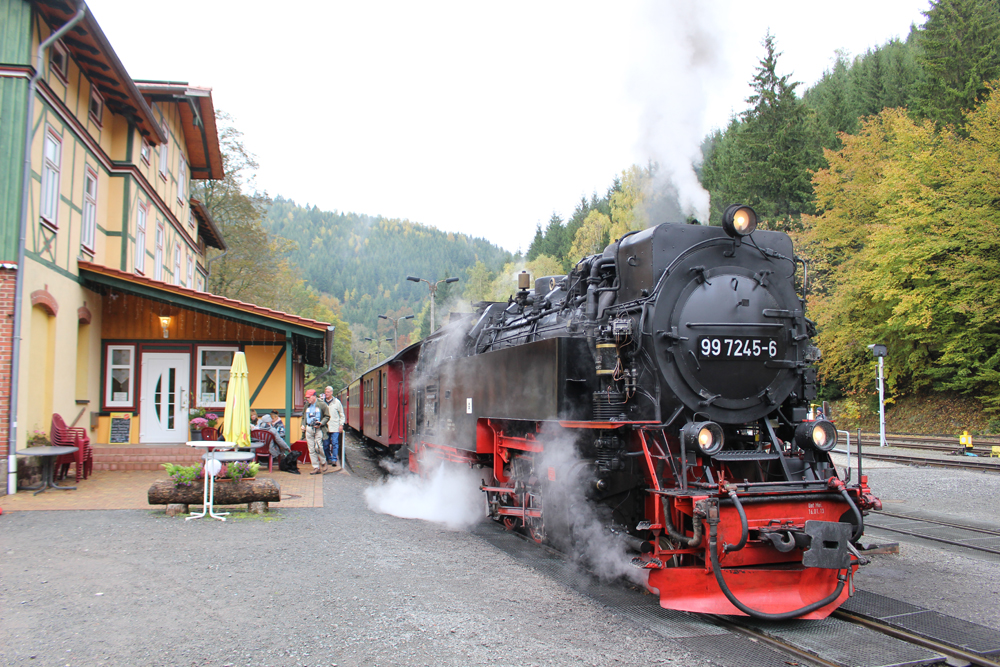
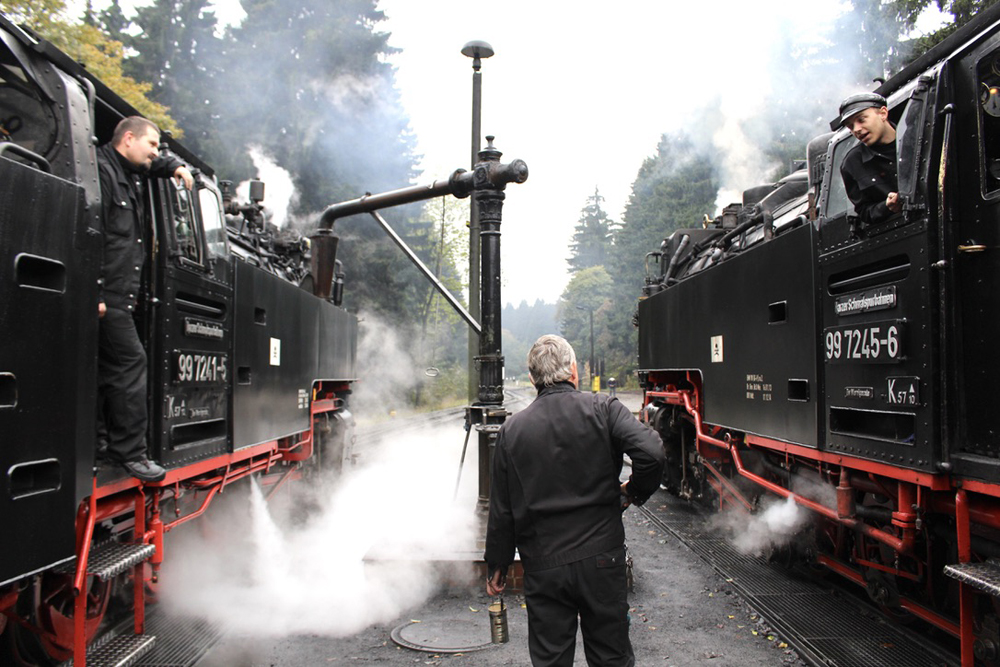
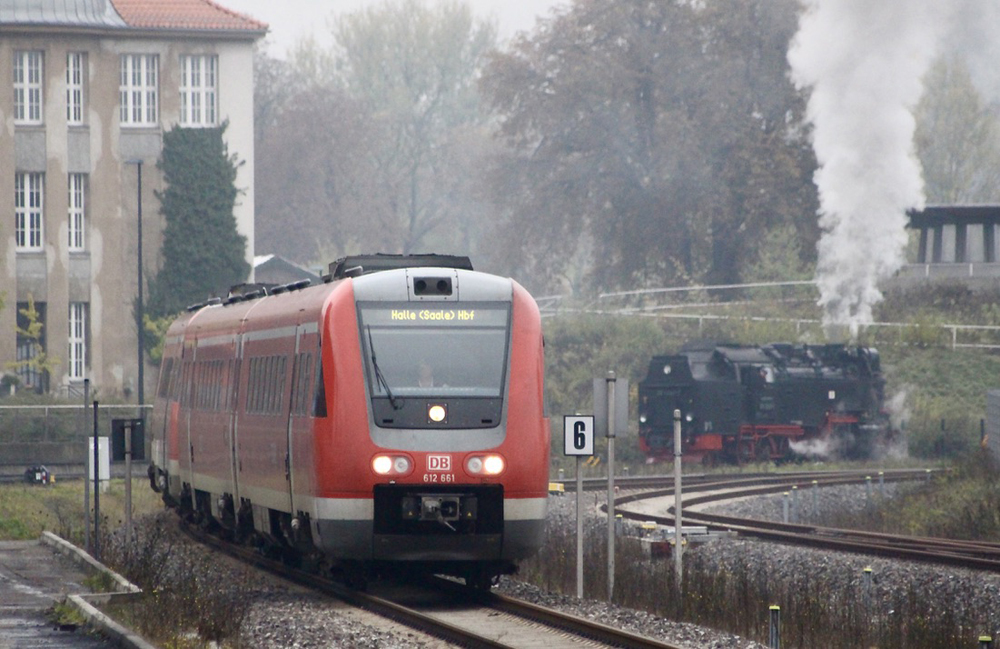
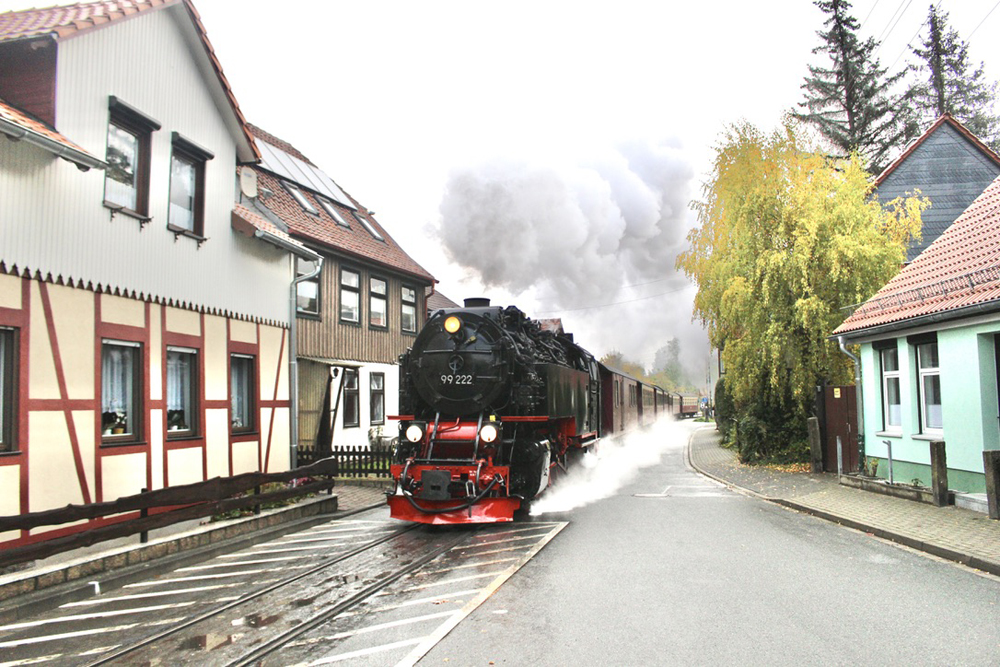






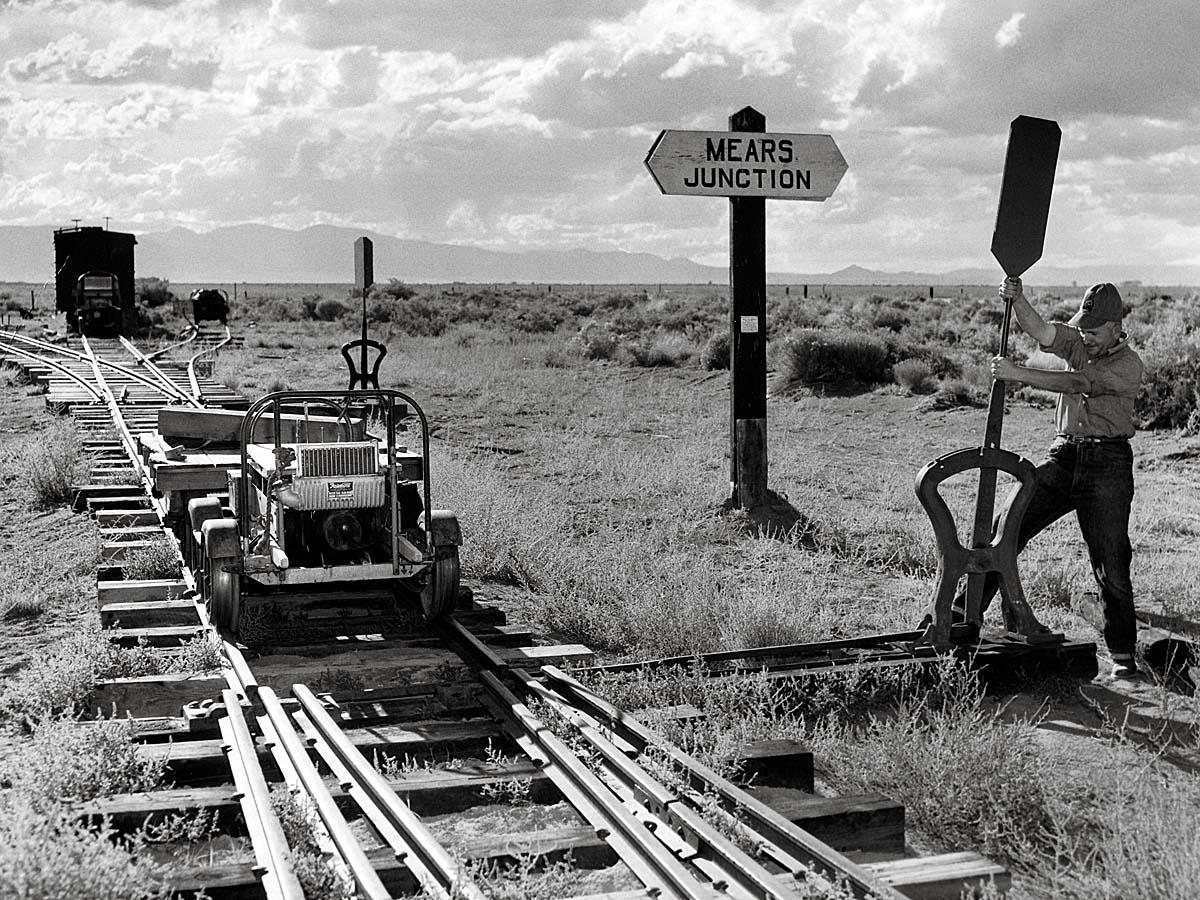
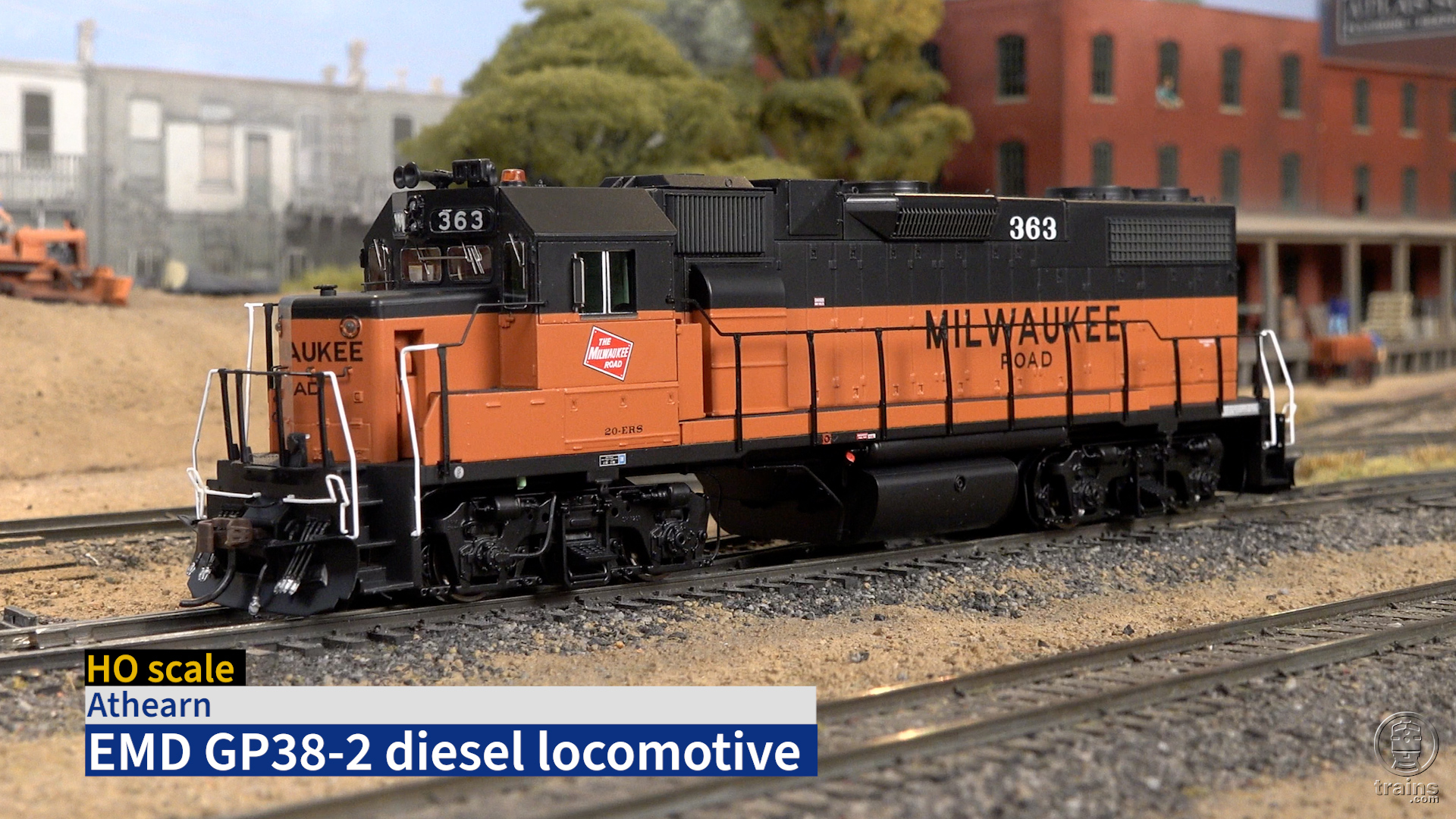
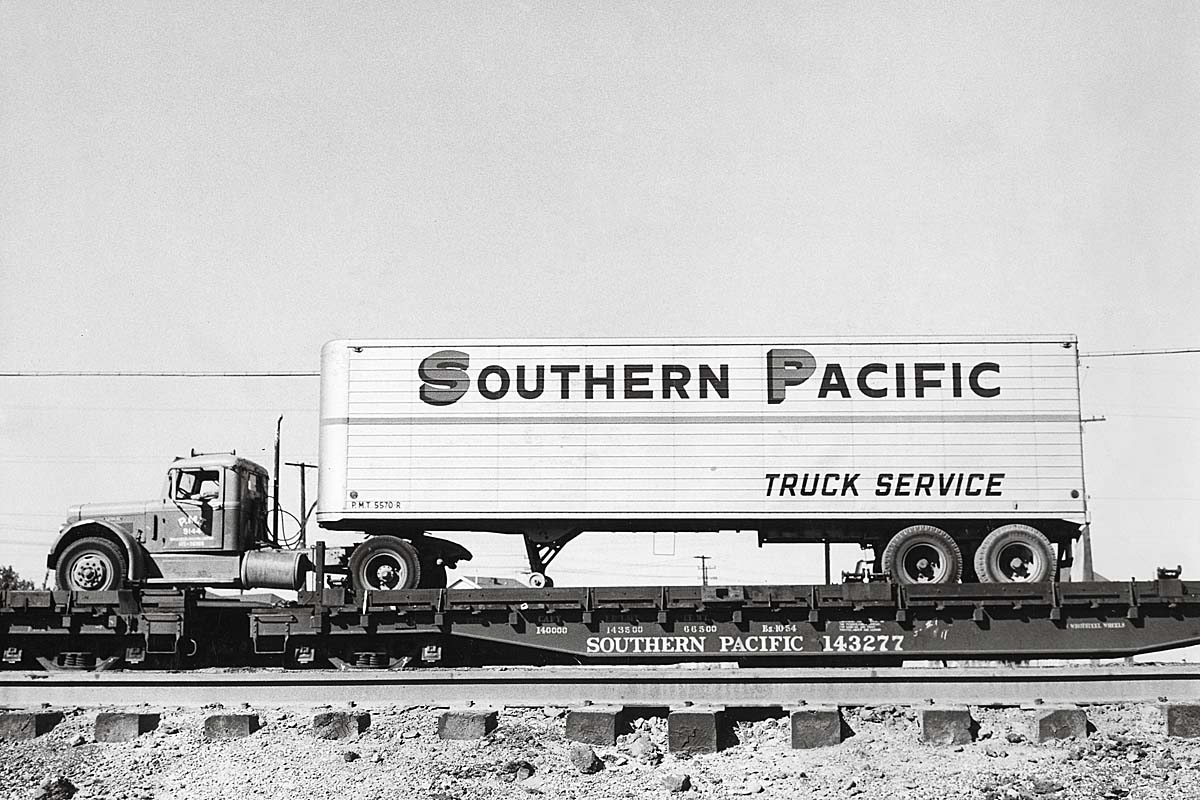
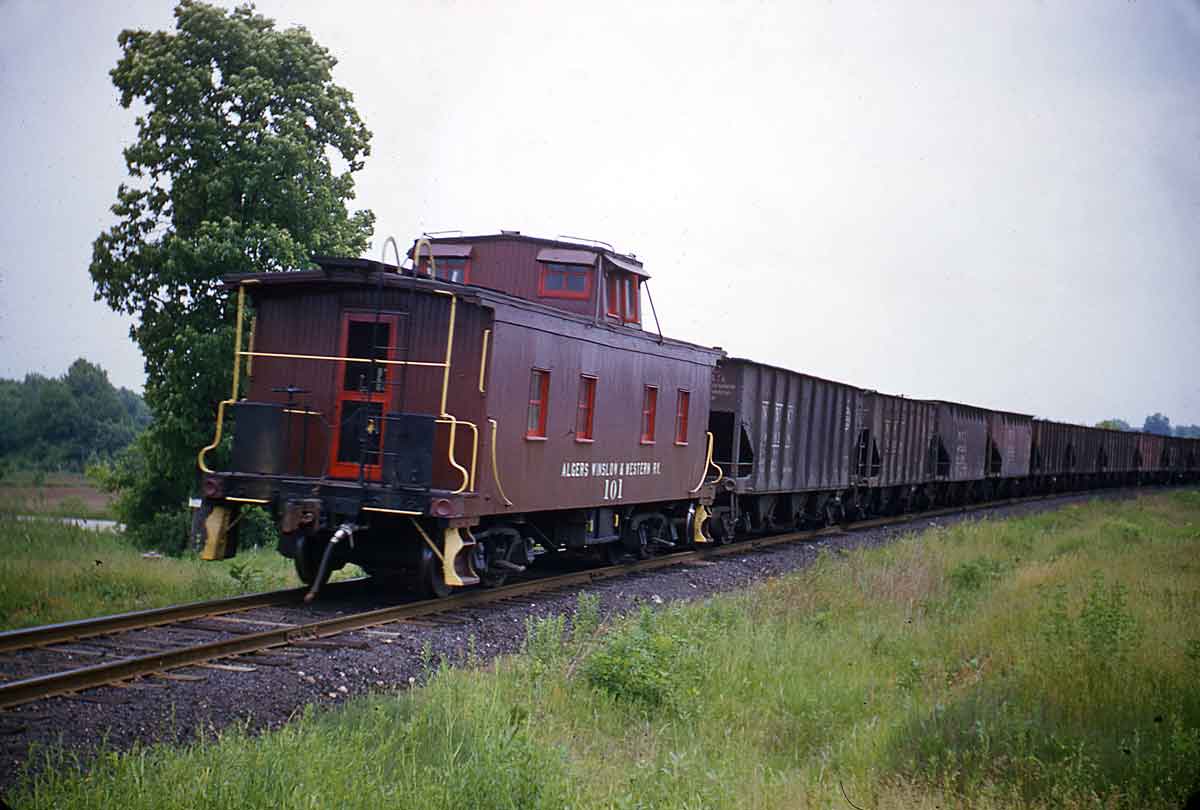




Thanks for the quick trip on a railroad I have always wantd to see and ride. Doubt I’ll ever make it so again thanks for sharing
I was on that trip. Thanks for the memories, David.
Jeff English
Troy, New York